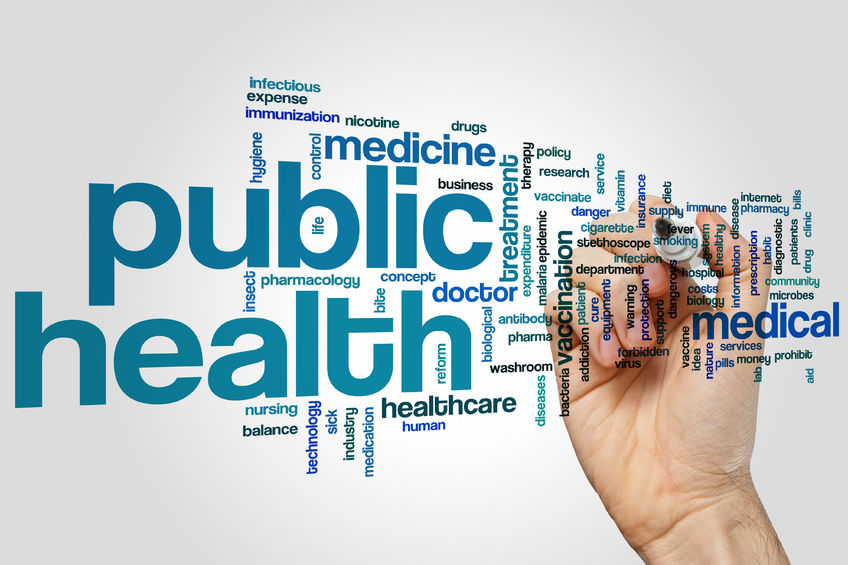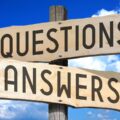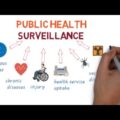Public health is the science of protecting and improving the health of people and their communities. This work is achieved by promoting healthy lifestyles, researching disease and injury prevention, and detecting, preventing and responding to infectious diseases. This test is designed to test your knowledge of medicine and public health
| QUESTION | ANSWER |
| A group of medical or dental doctors who share a facility and other personnel is referred to as | a clinic |
| The federal agency that researches the quality of health care delivery and identifies the standards of treatment that should be provided is called | Agency for Health Care Policy and Research (AHCPR) |
| Uses very minute, dilute, doses of drugs to produce the symptoms of the disease being treated and to stimulate the immune system to remove toxins and heal the body; | homeopathy |
| Uses a series of sequential, slow, graceful, and precise body movements combined with breathing techniques to improve energy flow; | Tai Chi |
| uses concentration, specific positions, and ancient ritual ovements to maintain the balance and flow of life energy; | yoga |
| A concept that has developed in response to rising health care costs is called | Managed care |
| uses animals to enhance health and stimulate an interest in life; | pet therapy |
| A government program that provides health care for all military active duty, and retired members and their families is called | TRICARE |
| An organizational structure should indicate | areas of responsibility and lead to the most efficient operation of a facility. |
| In preferred provider organizations (PPOs), insured people are | restricted to using specific hospitals or doctors. |
| uses very minute, dilute, doses of drugs to produce the symptoms of the disease being treated and to stimulate the immune system to remove toxins and heal the body | homeopathy |
| Medical centers at universities may offer free treatment and care to provide | a learning experience for medical students. |
| The health care worker should understand | the functions and goals of an employing organization. |
| One way Congress is trying to control costs for government insurance plans such as Medicare and Medicaid is called | Diagnostic related groups (DRGs) |
| Developed an organized method to observe the human body and recorded the signs and symptoms of many diseases. | Hippocrates |
| The most rapid advances in health care occurred during | the 20th century. |
| patients have the right to use these methods, and health care workers must respect this right while providing total patient care | alternative methods |
| Michelangelo and Leonardo da Vinci | used dissection in order to draw the human body more realistically. |
| Promotes physical, emotional, social, intellectual, and spiritual well-being. | Holistic health care |
| Most assisted- or independent-living facilities are associated with | nursing homes, extended-care facilities, and/or skilled-care facilities. |
| Telemedicine uses | video, audio, and computer systems to provide medical and/or health care services. |
| applies pressure to specific points on the foot so energy is directed toward the affected body part; | reflexology |
| Every patient has the right to | choose or refuse any type of health care. |
| Ways to promote physical wellness include | avoiding alcohol, tobacco, caffeine, drugs, and risky sexual behavior |
| Obtaining continual learning and using common sense are examples of ways to promote | mental and intellectual wellness |
| Public health and sanitation systems were first developed by the | ancient Romans |
| The Father of Medicine | Hippocrates |
| Bifocals for glasses were invented by | Benjamin Franklin |
| A vaccination for smallpox was developed in 1796 by | Edward Jenner |
| Disinfectants and antiseptics were first used to prevent infection during surgery by | Joseph Lister |
| The founder of the American Red Cross in 1881 was | Clara Barton |
| The professional education of nurses was started by | Florence Nightingale |
| The individual whose studies formed the basis for psychology and psychiatry is | Sigmund Freud |
| Penicillin was discovered in 1928 by | Sir Alexander Fleming |
| The polio vaccine was developed in 1952 by | Jonas Salk |
| The first “test tube” baby was born in England in the | 1970s |
| Acquired immune deficiency syndrome (AIDS) was identified as a disease in the | 1980s |
| Birth control pills were first approved by the FDA in the | 1960s |
| The first kidney transplant in humans was performed in the | 1950s |
| The first kidney transplant in humans was performed in the | 1950s |
| The alternative therapy that uses breathing and muscle relaxation techniques to quiet the mind by focusing attention on obtaining a sense of oneness is | meditation |
| The alternative therapy that encourages the use of certain vitamins to neutralize free radicals is | antioxidants |
| The alternative therapy based on the belief that illness and pain occur when Qi (life energy) is blocked as it flows through meridians is | acupressure |
| The alternative/complementary practitioner who believes that a life energy flows through every living person in an invisible system of meridians is a/an | Chinese medicine practitioner |
| Performs special diagnostic tests | Laboratories |
| Provide assistance and care for elderly patients | Long-term care facilities |
| Provides care for accidents or sudden illness | Emergency care services |
| Located in large companies or industries | Industrial health care centers |
| Provide care for the teeth and dental diseases | Dental offices |
| Provide guidance, counseling, and chemical abuse treatment centers | Mental health facilities |
| Provide care for individuals with physical or mental handicaps to allow maximum self-care and function | Rehabilitation facilities |
| Provide a variety of services in patient’s home | Home health care |
| Provide care for terminally ill persons | Hospice agencies |
| Provide total health care directed toward preventive health care | Health maintenance organizations |
| diagnosis, treatment, examinations, basic laboratory testing, minor surgery | services offered by medical offices. |
| preparation of dentures and other devices used to repair or replace teeth | services are provided by dental laboratories? |
| Services provided by home health care agencies. | nursing care, personal care, therapy, homemaking |
| The name of the federal agency responsible for regulating food and drug products sold to the public? | Food and Drug Administration (FDA) |
| The name of the federal agency that establishes and enforces standards that protect workers from job-related injuries and illnesses? | Occupational Safety and Health Administration (OSHA) |
| Why does an individual maintain a better state of health under health maintenance organizations (HMOs)? | ready access to health examinations and early treatment and detection of disease |
| What is the name of the health insurance plan that provides treatment for workers injured on the job? | Workers’ Compensation |
| What groups of people are covered by Medicare? | all individuals over the age of 65 and any person with a disability who has received Social Security benefits for at least two years |
| Pressure is applied with fingers, palms, thumbs, or elbows to specific pressure points of the body to stimulate and regulate the flow of energy; | acupressure |
| Very thin needles are inserted at specific points along the meridians in the body to stimulate and balance the flow of energy | acupuncture |
| Nutritional therapy that encourages the use of substances to prevent or inhibit oxidation of free radicals; | antioxidants |
| use of selected fragrances to alter mood and restore the body, mind, and spirit; | aromatherapy |
| relaxation therapy that uses monitoring devices to provide a patient with information about his/her reaction to stress by showing the patient his/her physical responses to stress; | biofeedback |
| gentle hand pressure is applied to the body’s chakras (energy centers) to harness and balance the life energy force, help clear blockages, and stimulate healing; | healing touch |
| uses herbal medicines to remove impurities, strengthen the immune system, and protect against disease; | herbal or botanical medicine |
| What is the name of the health insurance plan that provides treatment for workers injured on the job? | Workers’ Compensation |
| Provide a variety of services in patient’s home | Home Health Care |
| The individual whose studies formed the basis for psychology and psychiatry is | Sigmund Freud |
| The alternative/complementary practitioner who believes that a life energy flows through every living person in an invisible system of meridians is a/an | Chinese medicine practitioner |
| The health care worker should understand | the functions and goals of an employing organization. |
| The alternative therapy that encourages the use of certain vitamins to neutralize free radicals is | antioxidants |
| The polio vaccine was developed in 1952 by | Jonas Salk |
| The professional education of nurses was started by | Florence Nightingale |
| The alternative therapy that uses breathing and muscle relaxation techniques to quiet the mind by focusing attention on obtaining a sense of oneness is | meditation |
| The federal medical assistance program that pays for the health care of individuals with low incomes and individuals who are physically disabled or blind is called | medicaid |
| The Medicare coverage that assists with payment for pharmaceutical (medication) expenses is | type D |
| The Medicare coverage that assists with payment for hospital services and care is | type A |
| The Health Insurance Portability and Accountability Act (HIPPA) | provides strict guidelines for maintaining confidentiality of health care information |
| Prevents health care fraud and abuse, tax-related health provisions and health care access, portability and renewability | components of the Health Insurance Portability and Accountability Act (HIPPA) |
Created by: Health Science





